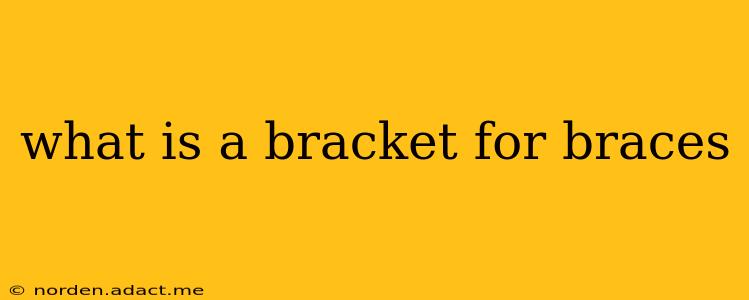What is a Bracket for Braces? Understanding Orthodontic Appliances
The term "bracket for braces" can be a bit confusing, as it's essentially a redundancy. A bracket is a crucial component of braces. To clarify, let's break down what each term means in the context of orthodontics:
Braces: This refers to the entire system of appliances used to straighten teeth. It encompasses brackets, wires, bands, and other components.
Brackets: These are the small, square or rectangular metal or ceramic pieces that are bonded to the surface of each tooth. They act as the anchors for the archwire, which applies pressure to move the teeth into their desired positions. Think of them as the foundation upon which the entire brace system is built.
What are the Different Types of Brackets?
Several types of brackets cater to different needs and preferences:
-
Metal Brackets: These are the most common type, made of stainless steel. They are durable, affordable, and highly effective.
-
Ceramic Brackets: These are tooth-colored brackets, making them more aesthetically pleasing than metal brackets. However, they can be more prone to breakage and are generally more expensive.
-
Lingual Brackets: These brackets are bonded to the back of the teeth, making them invisible from the front. They are the most expensive option and may require a longer adjustment period.
-
Self-ligating Brackets: These brackets use a clip or slide mechanism instead of elastic ties to hold the archwire in place. This often leads to less friction and potentially faster treatment times.
How are Brackets Attached to Teeth?
Brackets are bonded to the teeth using a special dental adhesive. This process involves cleaning the tooth surface thoroughly, applying the adhesive, and then carefully placing the bracket in its precise position. A curing light is used to harden the adhesive, securely attaching the bracket to the tooth.
What is the Role of the Archwire in Braces?
The archwire, a thin wire that runs through the brackets, is the element that applies the force needed to move teeth. The orthodontist bends the archwire to create the desired pressure and gradually guide the teeth into alignment. The brackets are essential because they provide the points of attachment for this archwire.
Why are Brackets Important in Orthodontic Treatment?
Brackets are the cornerstone of orthodontic treatment. Without them, there would be no way to securely attach the archwire and effectively apply force to move the teeth. Their precise placement and secure bonding are crucial for successful teeth straightening.
What Happens After Braces are Removed?
Once treatment is complete, the brackets are carefully removed by the orthodontist. The remaining adhesive is then cleaned from the tooth surfaces, and the teeth may be polished to restore their smoothness. A retainer is usually necessary to maintain the new position of the teeth after the braces have been removed.
In short, the term "bracket for braces" is simply a more descriptive way of referring to the individual components that make up the overall orthodontic brace system. The brackets are the essential anchors that allow for the controlled movement of teeth during orthodontic treatment.
